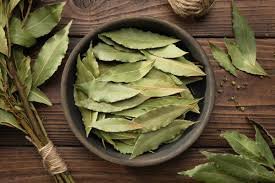Here’s a detailed breakdown.
The Science Behind the Claim
Bay leaves (from the Laurus nobilis plant) contain volatile essential oils, with the primary one being cineole (also known as eucalyptol). This compound has insecticidal and repellent properties that some pests find unpleasant.
However, it’s crucial to manage expectations:
-
It’s a Repellent, Not an Insecticide: Bay leaves work by creating a scent barrier that deters pests from entering an area or settling on a surface. They do not kill insects on contact or eliminate an existing infestation.
-
Effectiveness Varies by Pest: They are generally more effective as a deterrent for stored-product pests and some crawling insects rather than for highly motivated pests like mosquitoes.
How to Use Bay Leaves for Pest Control
For the best results, you need to use whole, dry bay leaves and crush them slightly to release their aromatic oils.
1. For Cockroaches and Crawling Insects (Pantry Moths, Ants)
This is where bay leaves are most effective. Cockroaches, in particular, seem to dislike the scent.
-
In Cabinets and Pantries: Place 3-4 whole bay leaves on the shelves and in the corners of your food storage areas. Focus on spots where you’ve seen activity.
-
Under Appliances: Tuck a few leaves under the refrigerator, stove, and dishwasher.
-
Entry Points: Place crushed leaves near potential entry points like cracks in the floor, gaps around pipes, or under the sink.
2. For Flies (Houseflies, Fruit Flies)
The strong scent can help deter flies from lingering in small, enclosed areas.
-
On Windowsills: Place a small bowl of crushed bay leaves on windowsills, especially in the kitchen.
-
Near Trash Cans: Put a few leaves at the bottom of your indoor trash can or in the bin liner.
-
Fruit Bowl: Tuck a whole bay leaf or two underneath the fruit in your fruit bowl to help repel fruit flies.
3. For Mosquitoes
The effect on mosquitoes is the weakest. While the scent may provide a very mild, localized repellent effect, it is not a substitute for proven repellents like DEET, Picaridin, or oil of lemon eucalyptus for personal protection.
-
Outdoor Dining: You can scatter a few crushed leaves around your patio table or add them to a citronella candle’s flame to release the scent. The effect will be minimal and very localized.
-
DIY Sachets: Make small sachets with crushed bay leaves and other aromatic herbs like rosemary and mint. Place them in outdoor seating areas.
A Simple, Effective Bay Leaf Repellent Sachet
This combines bay leaves with other pest-deterring scents for a stronger effect.
Ingredients:
-
1/2 cup whole, dry bay leaves (crushed)
-
1/4 cup dried peppermint leaves
-
2 tablespoons whole cloves
Instructions:
-
Lightly crush the bay leaves in your hands or with a mortar and pestle.
-
Mix all ingredients in a bowl.
-
Fill small cheesecloth bags, empty tea bags, or even just small bowls with the mixture.
-
Place these sachets in pantries, cupboards, under sinks, and near doorways.
Important Realities and Limitations
-
Not a Standalone Solution: Bay leaves are best used as a preventative measure and as part of an integrated pest management plan. They will not solve a serious infestation.
-
For a real infestation, you must focus on sanitation (eliminating food/water sources), sealing entry points, and using baits or professional pest control if necessary.
-
The Scent Fades: The essential oils in bay leaves evaporate over time. Replace them every few months or when you can no longer smell their distinct aroma.
-
Safety: Bay leaves are non-toxic to humans and pets, which is their biggest advantage. However, always ensure pets cannot eat them in large quantities, as they can be a choking hazard or cause mild stomach upset.
Verdict
Yes, bay leaves can help deter flies, mosquitoes, and cockroaches as a mild, natural, and safe repellent. They are most effective against pantry pests and cockroaches in enclosed spaces.
Think of them as a helpful deterrent, not a magic bullet. For best results, use them consistently alongside good cleaning habits and other pest control methods.
